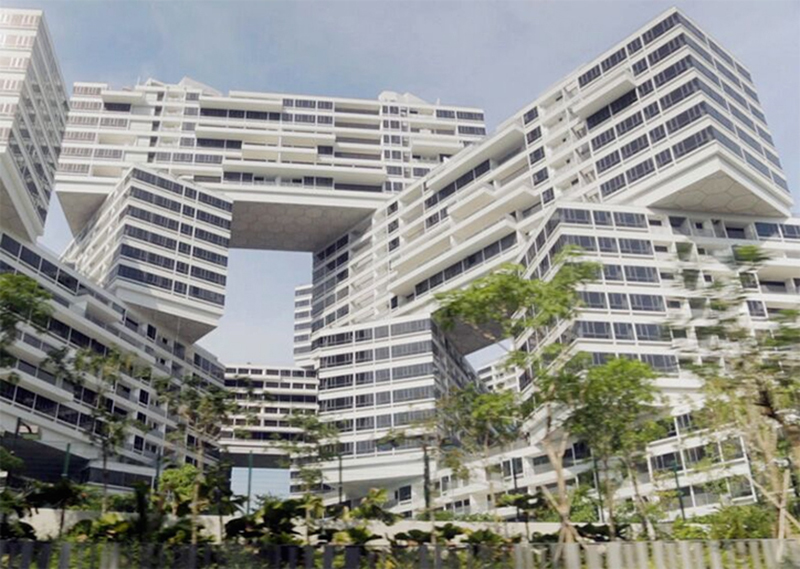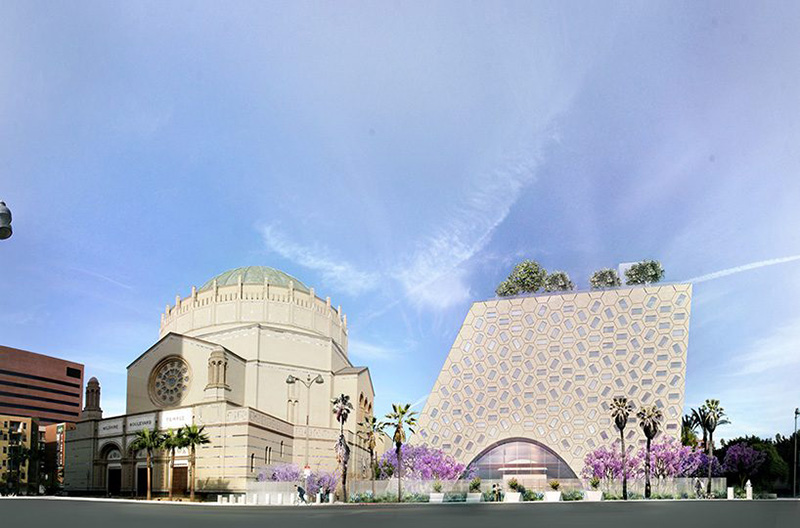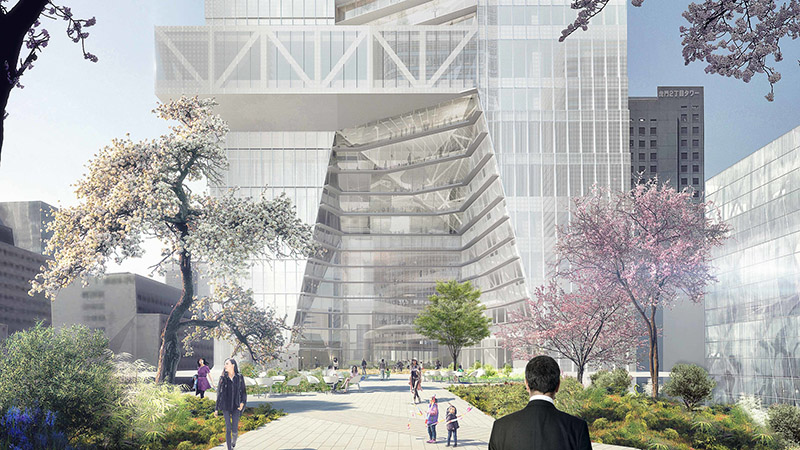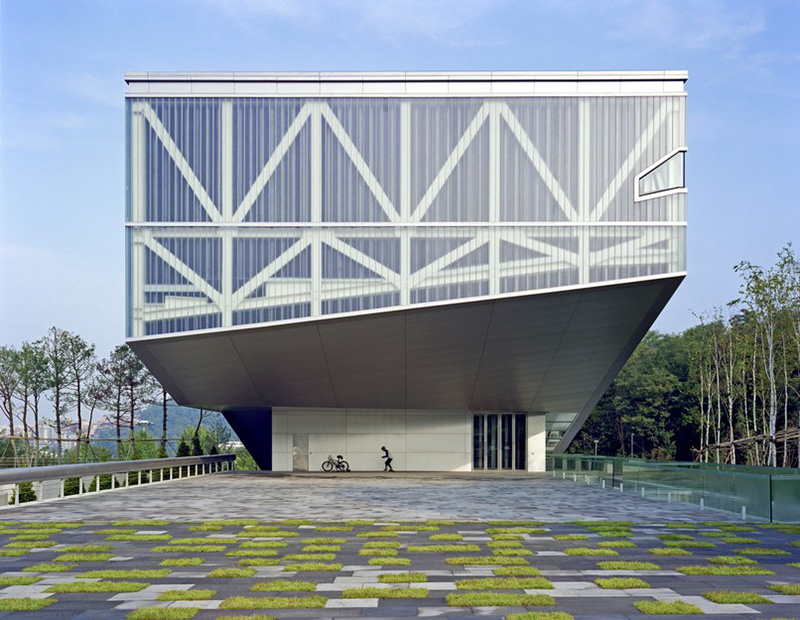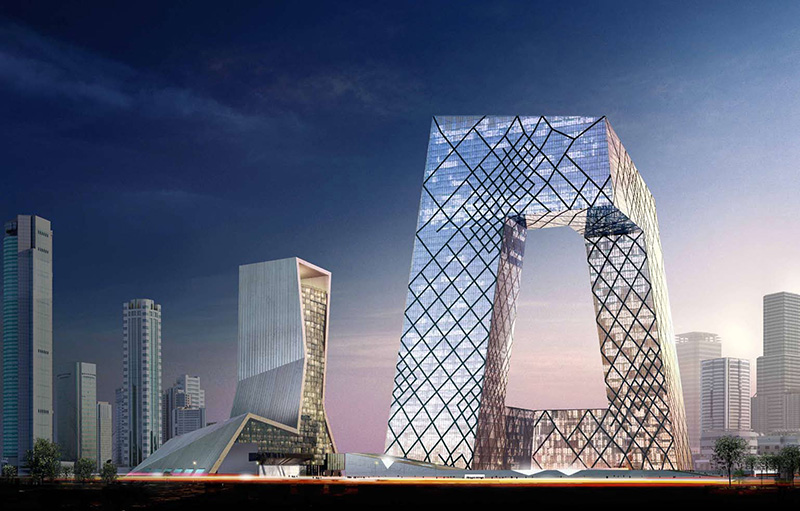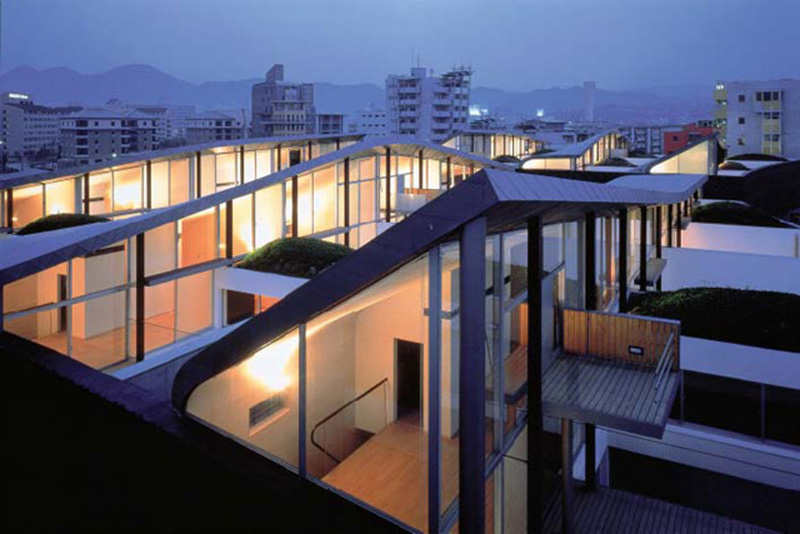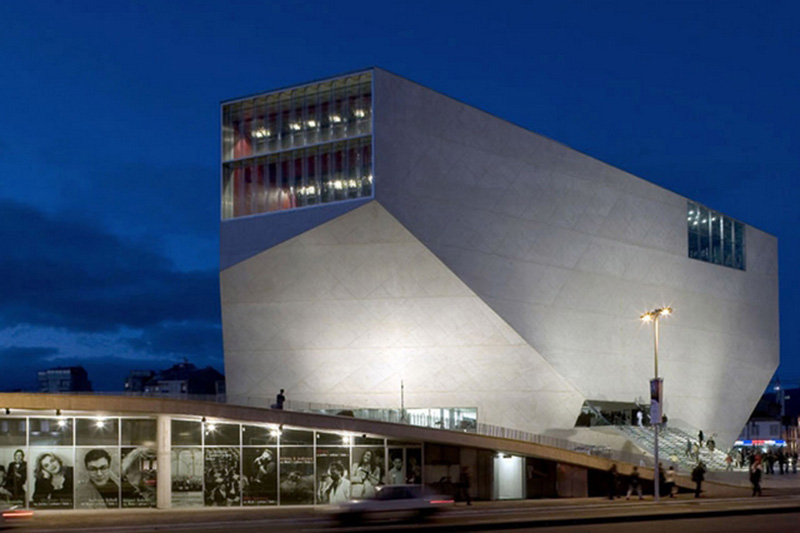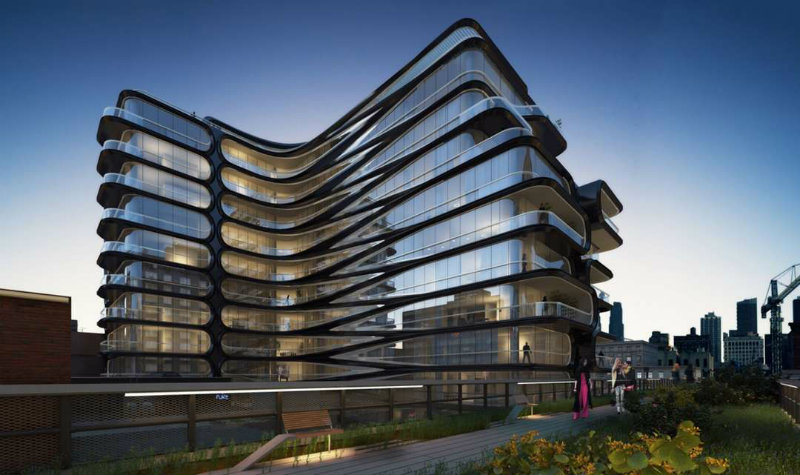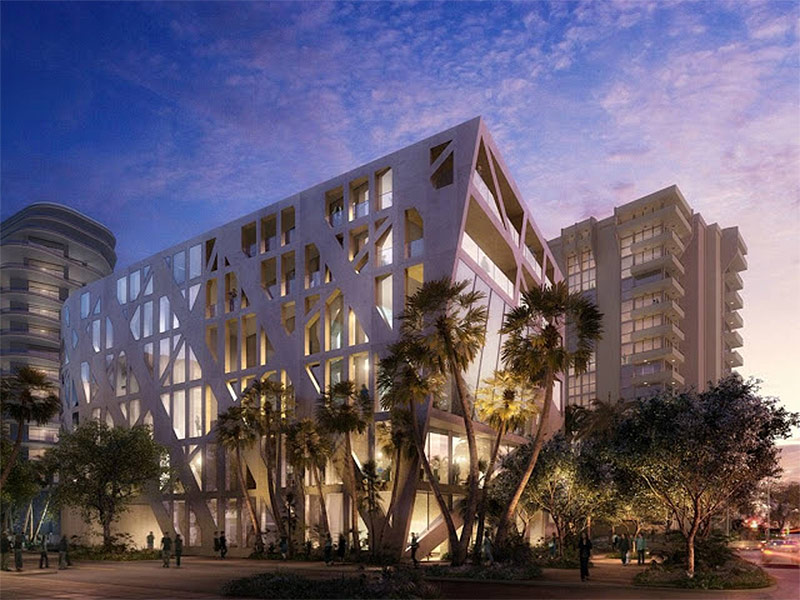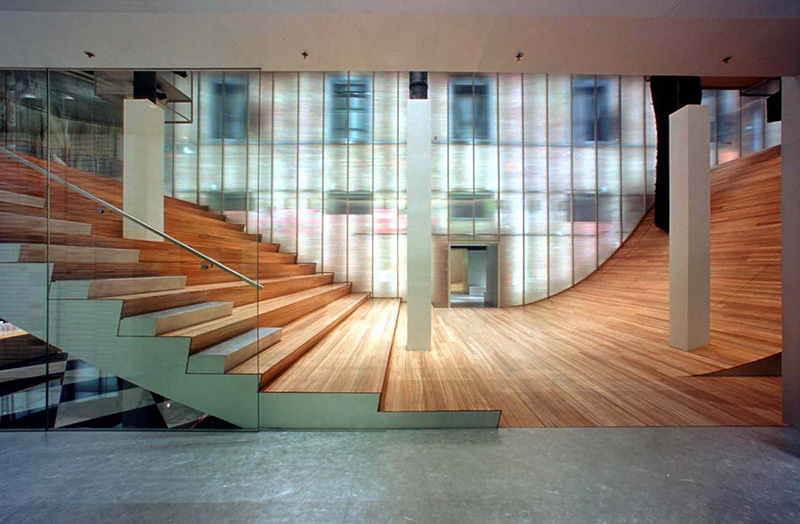ARCHITECTURE: Rem Koolhaas
 “The reason that I am interested about Architecture is the possibility that offers to work in different places, projects and scales. If this was cultivated Architecture could evolve significantly. Architects continue to build certain types of buildings in which they were trained, they probably have exhausted their ideas. If they do not change, they do not evolve and thus end up not thinking.” Rem Koolhaas.
“The reason that I am interested about Architecture is the possibility that offers to work in different places, projects and scales. If this was cultivated Architecture could evolve significantly. Architects continue to build certain types of buildings in which they were trained, they probably have exhausted their ideas. If they do not change, they do not evolve and thus end up not thinking.” Rem Koolhaas.
By Dimitris Lempesis
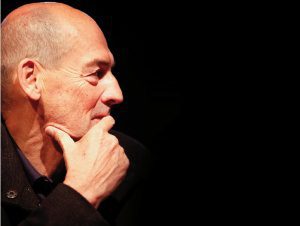 The Dutch Architect Rem Koolhaas (17/11/1944- ), studied at the Architectural Association of London, in 1968 met Elias Zengelis, who was professor at the famous and important School of Architecture in London. Together with the couple Zoe & Elias Zengelis and his wife Madelon Vriesendorp founded in 1975 the architectural office O.M.A. (Office for Metropolitan Architecture), in 1977 Zaha Hadid (their promising and beloved student) joined the team. The Theoretical positions of Koolhaas, for the Architecture are included and reflected in his books: Delirious New York-1978, which contains a manifesto that analyzes the greatness of N. York as past capital of innovative architecture, S,M,L,XL-1995 a 1376-page tome combining essays, manifestos, diaries, fiction, travelogues, and meditations on the contemporary city. Other books are: “Mutations”, “The Harvard Design School Guide to Shopping” and the “The Great Leap Forward”. The first large-scale project that put him in the panel of famous Architecture was the Kunsthal (National Gallery) in Rotterdam in 1981, was also the reason, the driving force in the coming years to create the entire stream of Dutch Architecture that was exportable. Due to the change of position of the building, it was redesigned in 1984, completed in 1987 and attracted international attention. Other project that completed the 80s are: the Police Department of Almere, a bus station in Rotterdam, which was demolished in 2005, the Residential Complex at Checkpoint Charlie in Berlin and the Villa Dall’Ava in Paris where the customer in accordance with Koolhaas “He asked for a masterpiece. He wanted a glass house. He wanted a swimming pool on the roof. So many delays plagued the house that it became a record of our own (OMA’s) growing up”. In the 90s gained renown through a series of groundbreaking entries in major competitions, the biggest projects were Euralille (1994), a 70-hectare business and civic center in Lille, northern France comprising the European hub for high-speed trains, transformed a once dormant center of more than 50 million inhabitants into a site offering connectivity, and a range of contemporary activities. The Maison à Bordeaux, a private residence of three floors on a cape-like hill overlooking Bordeaux. The lower level is a series of caverns carved out from the hill, designed for the most intimate life of the family the ground floor on garden level is a glass room – half inside, half outside – for living; and the upper floor is divided into a children’s and a parents’ area. The heart of the house is a 3×3.5m elevator platform that moves freely between the three floors, becoming part of the living space or kitchen or transforming itself into an intimate office space, and granting access to books, artwork, and the wine cellar. In 2000 he was awarded the Nobel Prize of Architecture: Pritzker Prize, where the Selection Committee described him as “visionary” and “philosopher.” While the year of the award, Koolhaas began a broader collaboration with Muccia Prada, and designing a series of branches of the firm, including in New York, where he converted an old piano factory into a modern store. Other projects are: the Dutch Embassy in Berlin, the Leeum Samsung Museum of Art in Seoul, the Casa da Música in Porto, and the Main Building of Chinese television in Beijing for the Olympic Games.
The Dutch Architect Rem Koolhaas (17/11/1944- ), studied at the Architectural Association of London, in 1968 met Elias Zengelis, who was professor at the famous and important School of Architecture in London. Together with the couple Zoe & Elias Zengelis and his wife Madelon Vriesendorp founded in 1975 the architectural office O.M.A. (Office for Metropolitan Architecture), in 1977 Zaha Hadid (their promising and beloved student) joined the team. The Theoretical positions of Koolhaas, for the Architecture are included and reflected in his books: Delirious New York-1978, which contains a manifesto that analyzes the greatness of N. York as past capital of innovative architecture, S,M,L,XL-1995 a 1376-page tome combining essays, manifestos, diaries, fiction, travelogues, and meditations on the contemporary city. Other books are: “Mutations”, “The Harvard Design School Guide to Shopping” and the “The Great Leap Forward”. The first large-scale project that put him in the panel of famous Architecture was the Kunsthal (National Gallery) in Rotterdam in 1981, was also the reason, the driving force in the coming years to create the entire stream of Dutch Architecture that was exportable. Due to the change of position of the building, it was redesigned in 1984, completed in 1987 and attracted international attention. Other project that completed the 80s are: the Police Department of Almere, a bus station in Rotterdam, which was demolished in 2005, the Residential Complex at Checkpoint Charlie in Berlin and the Villa Dall’Ava in Paris where the customer in accordance with Koolhaas “He asked for a masterpiece. He wanted a glass house. He wanted a swimming pool on the roof. So many delays plagued the house that it became a record of our own (OMA’s) growing up”. In the 90s gained renown through a series of groundbreaking entries in major competitions, the biggest projects were Euralille (1994), a 70-hectare business and civic center in Lille, northern France comprising the European hub for high-speed trains, transformed a once dormant center of more than 50 million inhabitants into a site offering connectivity, and a range of contemporary activities. The Maison à Bordeaux, a private residence of three floors on a cape-like hill overlooking Bordeaux. The lower level is a series of caverns carved out from the hill, designed for the most intimate life of the family the ground floor on garden level is a glass room – half inside, half outside – for living; and the upper floor is divided into a children’s and a parents’ area. The heart of the house is a 3×3.5m elevator platform that moves freely between the three floors, becoming part of the living space or kitchen or transforming itself into an intimate office space, and granting access to books, artwork, and the wine cellar. In 2000 he was awarded the Nobel Prize of Architecture: Pritzker Prize, where the Selection Committee described him as “visionary” and “philosopher.” While the year of the award, Koolhaas began a broader collaboration with Muccia Prada, and designing a series of branches of the firm, including in New York, where he converted an old piano factory into a modern store. Other projects are: the Dutch Embassy in Berlin, the Leeum Samsung Museum of Art in Seoul, the Casa da Música in Porto, and the Main Building of Chinese television in Beijing for the Olympic Games.

